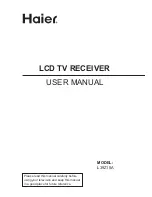
prohibited for use with this device.
Le présent émetteur radio a été approuvé par Innovation, Sciences et Développement Économique
Canada pour fonctionner avec les types d’antenne énumérés ci-dessous et ayant un gain admissible
maximal et l’impédance requise pour chaque type d’antenne. Les types d’antenne non inclus dans cette
liste, ou dont le gain est supérieur au gain maximal indiqué, sont strictement interdits pour l’exploitation
de l’émetteur.
IC RF Exposure compliance for wireless handset and cradle charger (BC-12)
This equipment complies with IC RSS-102 radiation exposure limits set forth for an uncontrolled
environment. This transmitter must not be co-located or operating in conjunction with any other antenna
or transmitter.
Cet équipement est conforme aux limites d’exposition aux radiations IC CNR-102 établies pour un
environnement non contrôlé. Cet émett
eur ne doitpas êtr
e situé ou fonctionner conjointement avec une
autre antenne ou un autre émetteur.
Australia & New Zealand
Complies with the requirements of level 2 devices of the Radio communications (Electromagnetic
Compatibility) standard 2017, Radiocommunications (VHF Radiotelephone Equipment – Maritime Mobile
Service) Standard 2018, and Radiocommunications (Short Range Devices) Standard 2014.
Trademarks
Navico® is a registered trademark of Navico Holding AS.
B&G® is a registered trademark of Navico Holding AS.
SIMRAD® is a registered trademark of Kongsberg Maritime AS, Licensed to Navico Holding AS.
NMEA® and NMEA 2000® are registered trademarks of the National Marine Electronics Association.
®Reg. U.S. Pat. & Tm. O
ff
, and ™ common law marks.
Visit
www.navico.com/intellectual-property
to review the global trademark rights and accreditations for
Navico Holding AS and other entities..
DSC (Digital Selective Calling)
Digital Selective C
alling off
ers sig
nificant saf
ety and convenience advantages over older VHF radios
without this functionality.
•
A valid USER MMSI must be entered into this radio before DSC functions can be used.
•
Many countries do not have radio repeaters that support DSC message relaying. However DSC can still
be useful for direct ship-to- ship communication, where the other vessel is also equipped with a DSC
capable radio.
•
DSC distress calls generated by this radio are limited to the same range restrictions that apply to regular
VHF transmissions. The vessel sending a distress can only rely upon DSC if within range of a GMDSS
Coast Radio Station. Typical VHF range may be about 20NM, though this varies greatly depending
upon installation, antenna type, meteorological conditions, etc.
ATIS (Automatic Transmitter Identification System)
•
ATIS is required for vessels making VHF transmissions whilst on the inland waterways of the Regional
Arrangement Concerning the Radiotelephone Service on Inland Waterways (RAINWAT) signatory
countries.
•
RAINWAT is an agreement to implement common principles and rules for the safe carriage of people
and goods on Inland Waterways.
•
The signatory countries are: Austria, Belgium, Bulgaria, Croatia, the Czech Republic, France, Germany,
Hungary, Luxembourg, Moldova, Montenegro, the Netherlands, Poland, Romania, Serbia, the Slovak
Republic and Switzerland.
•
Where a VHF is required on the inland waterways of the signatory countries, this must be capable of
ATIS transmissions, and have the feature activated.
•
The use of ATIS is prohibited outside the European inland waterways covered by the Basel Agreement.
| 7
Preface |
RS100 / RS100-B / V100 / V100-B User Manual








































